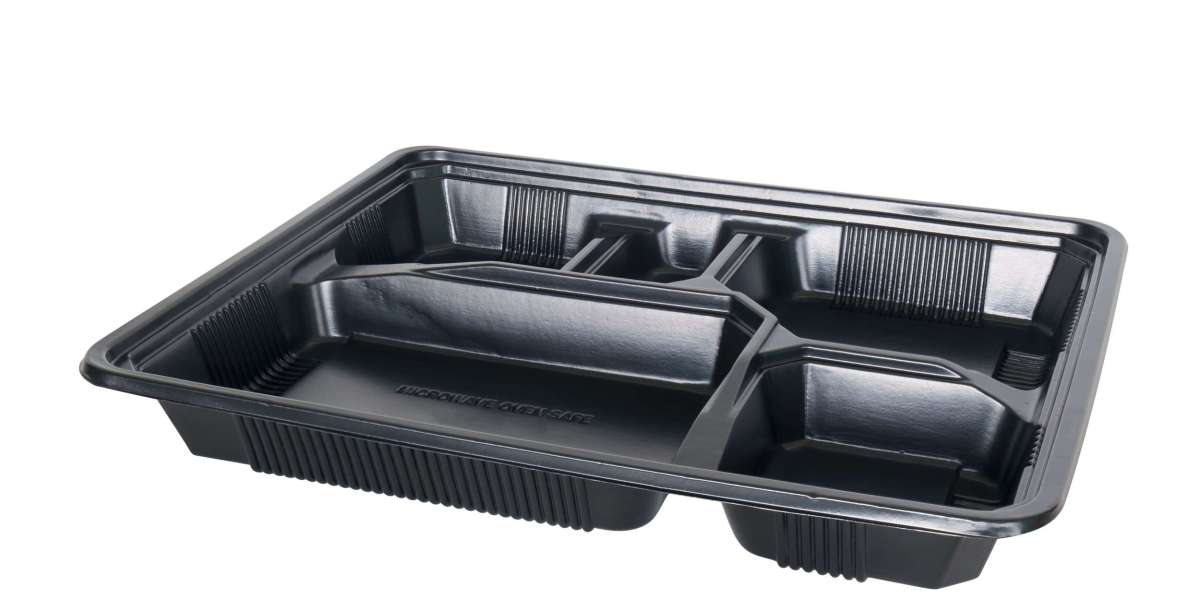The global thermoform packaging market is undergoing a paradigm shift, driven by increasing environmental concerns, stringent regulations, and evolving consumer preferences. As the industry looks toward the future, the long-term outlook suggests that sustainable and biodegradable packaging alternatives will play a pivotal role in shaping the market's trajectory. Investment in eco-conscious packaging solutions is accelerating, with stakeholders across the value chain—from material suppliers to end-product manufacturers—prioritizing environmentally friendly innovations.
This article explores the factors fueling the demand for sustainable thermoform packaging, the key materials and technologies leading this transformation, and the potential implications for global market growth over the next decade.
Sustainability: The Core of Market Transformation
One of the most critical forces influencing the thermoform packaging sector is the global push for sustainability. Governments, corporations, and consumers are increasingly demanding packaging that reduces environmental impact, leading to a reevaluation of traditional plastics and the introduction of biodegradable, recyclable, and compostable alternatives.
Key sustainability objectives in thermoform packaging include:
Reducing plastic waste and landfill accumulation
Lowering carbon emissions associated with production and disposal
Enhancing recyclability and reusability of packaging materials
Using renewable resources and plant-based materials in packaging
As these goals gain traction, long-term investments are being directed toward developing next-generation materials and technologies that align with circular economy principles.
Rising Investments in Biodegradable Materials
Biodegradable materials are central to the sustainable transformation of the thermoform packaging market. Unlike traditional petroleum-based plastics, these materials break down naturally over time, leaving minimal environmental residue.
Key biodegradable materials gaining momentum include:
Polylactic Acid (PLA): Derived from corn starch or sugarcane, PLA is compostable and widely used in food packaging.
Polyhydroxyalkanoates (PHA): A newer generation of bioplastics produced by microbial fermentation, offering high biodegradability.
Starch-based polymers: These blends provide flexibility and sustainability, especially in disposable packaging applications.
Cellulose-based films: Made from wood pulp, these are used in thermoformable trays and blisters for dry products.
Investment in the production and scalability of these materials has surged in recent years. Companies are not only enhancing their R&D capabilities but also forming strategic partnerships with bio-material startups to integrate these eco-friendly polymers into commercial applications.
Regulatory Support and Industry Incentives
Governments around the world are enacting policies and providing incentives to promote the use of sustainable packaging. These include:
Plastic bans and extended producer responsibility (EPR) legislation in Europe, North America, and parts of Asia.
Tax credits and subsidies for companies investing in biodegradable or recyclable packaging.
Mandates for recycled content in packaging, pushing the industry to incorporate post-consumer waste into production.
Such measures are expected to intensify in the coming years, driving a broader transition away from non-degradable materials and ensuring long-term growth for sustainable packaging segments within the thermoforming industry.
Consumer Awareness and Brand Expectations
Modern consumers are more environmentally conscious than ever before. A growing number actively seek out products packaged in eco-friendly materials, associating such practices with corporate responsibility and ethical business behavior.
Brands are responding by:
Switching to biodegradable thermoform packaging for products like fresh produce, ready-to-eat meals, and cosmetics.
Using clear labeling and certifications (e.g., compostable, recyclable) to highlight sustainable choices.
Promoting plastic-neutral or zero-waste goals as part of corporate sustainability missions.
This consumer-driven pressure is expected to further shape the long-term strategies of packaging providers, pushing them to differentiate through green innovation and environmentally conscious design.
Technological Innovations Supporting the Transition
The evolution of sustainable thermoform packaging is not limited to materials. Technological innovations are playing a vital role in optimizing production processes and reducing the environmental footprint.
Examples include:
Advanced extrusion technologies to process biodegradable polymers with greater efficiency and precision.
Digital thermoforming systems that minimize material waste and enable faster prototyping.
Smart packaging features, such as QR codes, to provide transparency about material sourcing, disposal, and recyclability.
Design optimization software to reduce packaging size and material usage without compromising functionality.
These innovations are not only enhancing sustainability but also improving cost-efficiency and scalability, making biodegradable options more viable for widespread adoption.
Opportunities in Key End-Use Segments
The long-term outlook for sustainable thermoform packaging is especially promising in the following industries:
Food and Beverage: Demand for compostable trays, clamshells, and blister packs is rising as retailers move away from Styrofoam and rigid plastics.
Healthcare and Pharmaceuticals: Biodegradable blister packaging for over-the-counter medication and supplements is gaining traction.
Electronics and Retail: Brands are using recycled and recyclable thermoform trays for electronics, tools, and household goods to appeal to eco-conscious consumers.
E-commerce: The growth of online retail is fueling demand for lightweight, protective, and sustainable packaging formats.
As these industries scale their commitment to sustainability, they offer a lucrative avenue for growth within the thermoform packaging market.
Conclusion
The long-term outlook for the thermoform packaging market is increasingly defined by a global commitment to sustainability. Growing investments in biodegradable and eco-friendly materials, along with regulatory incentives and shifting consumer values, are shaping a new era in packaging innovation.
Companies that prioritize sustainable material sourcing, invest in advanced technologies, and align with environmental goals are likely to emerge as leaders in the evolving market landscape. As awareness and adoption continue to grow, sustainable thermoform packaging is set to become the industry norm—paving the way for a greener, more responsible packaging future.








